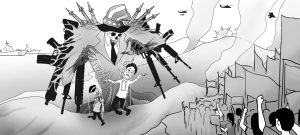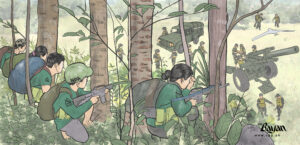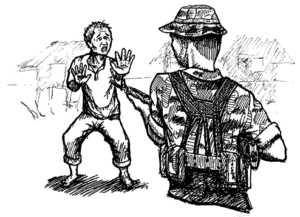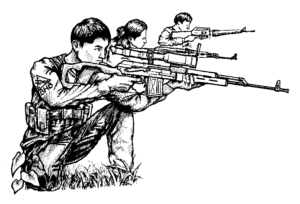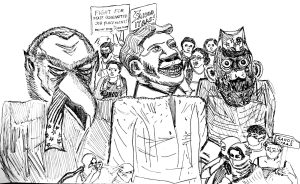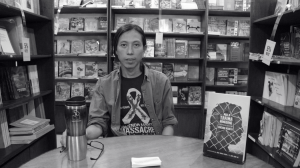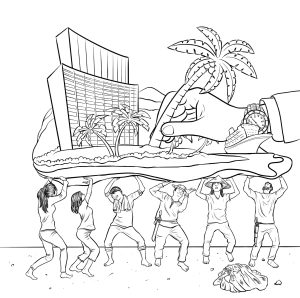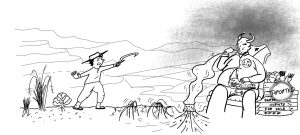Correspondence Kabataang Makabayan: Wellspring of the revolution in Negros

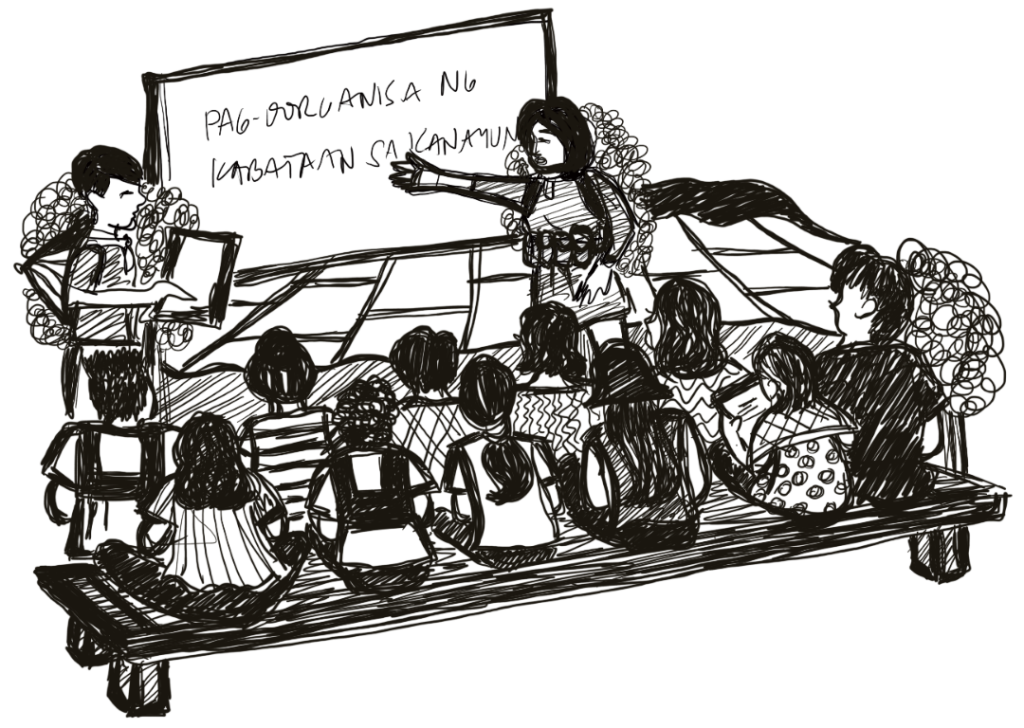
The chapter of Kabataang Makabayan in Katrina (not its real name), a village in Negros, was established in 2008. The chapter was formed at a time when the village was surrounded by CAFGU detachments and bad elements abound.
Poverty is severe in Katrina due to backward agricultural production. Most farmers here are tenants of landlords, rich and upper middle peasants. They barely earn enough because of the existing sharing scheme that favor the land owner. Due to poverty, they cannot afford to send their children to school.
To add to their families’ income, Katrina’s youth take jobs as domestic helpers even as young as 15 years old. In 2008, nearly 300 of them left for the cities to work in temporary low-wage jobs with no benefits. They went to Metro Manila, Cebu, Panay and Bacolod City. Not a few of them became victims of prostitution, mistreatment and sexual abuse.
Due to their bitter experiences, many parents no longer allowed their children to leave to work in cities. They were instead encouraged to plant corn, root crops, bananas and other food crops.
In early 2008, the Pambansang Katipunan ng Magbubukid was established in Katrina. The youth were gathered and had a talk with their organized parents who asked them to be their partners in revolutionary work. A batch of eight young reliables with no criminal records was the first to study the Short Course on Philippine Society and Revolution. From here, the organizing group of the Kabataang Makabayan was set up.
The group was assigned to organize other youths in the village to develop production and mount anti-feudal struggles. They were also encouraged to join the dagyaw-alayon, a form of cooperation.
Interaction between the youth and the Red fighters became frequent. Their activities, including cultural and instruction for PaDePa (Pambansang Demokratikong Paaralan or National Democratic School) trainings, are regularly assessed. Eventually, they were asked to participate in studies of Party courses and short politico-military courses.
Part of their task is to stage performances during mass actions. In the guerrilla zones, they enliven the anniversary celebrations of the Communist Party of the Philippines, the New People’s Army, the National Democratic Front of the Philippines and the Kabataang Makabayan. They also handle the tribute activities for the revolutionary martyrs.
Member-students are tasked to organize fellow students. They encourage students to participate in their cultural performances at school. They enlighten even their teachers.
Due to their perseverance and that of villagers, the organizing committee was built in December 2008 with more than 100 members. It expanded to more than 10 sitios from six at the beginning. Subsequently, three chapters were built in nearby villages.
When an encounter between the NPA and the AFP broke out in Katrina at the beginning of 2010s, close to platoon-sized number of young people volunteered to join the people’s army. In the following years, full-fledged mass organizations were established in the area. The level of the organs of political power and the local guerrilla unit in the village was raised. The militia unit and self-defense units were assigned members from the organizations. The barrio revolutionary committee was established. Most of them became Party members.
In 2018, the US-Duterte regime brutally ravaged Katrina. Not a few were killed and illegally arrested. As a result, scores again joined the NPA. In 2019, Party cadres and Red fighters from Katrina were assigned to strategic areas and other guerrilla fronts on the island. Eight of its warriors became revolutionary martyrs.
On the occasion of the 58th anniversary of the Kabataang Makabayan this year, the people of Katrina stand proud of the youth and Red fighters it has produced for the continuing revolution, not only in their area, but throughout the island.

